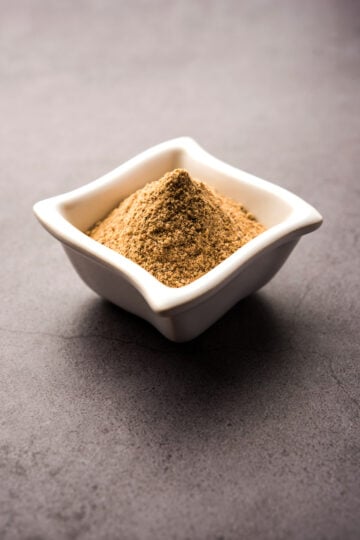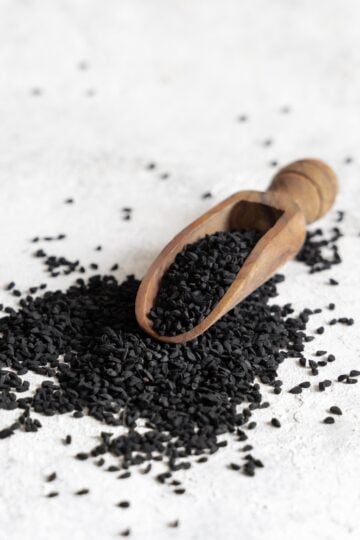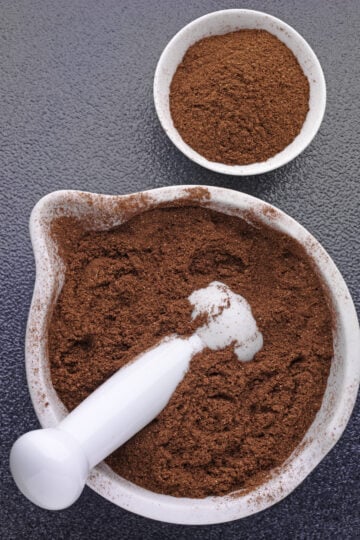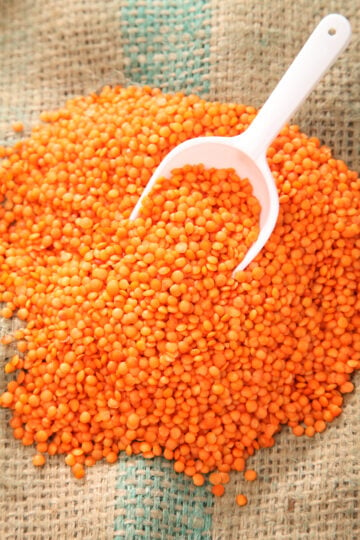
In South Indian kitchens, spice blends have long been an everyday ritual — coriander and cumin toasted until aromatic, red chilies ground for heat and color, and turmeric added for its deep golden hue. Out of this tradition came Madras curry powder, a blend that captured the essence of Tamil cooking.
Originally made in homes across the Madras region (now Chennai), it was later adapted for export during the British colonial period — one of the first Indian spice mixes to gain global popularity. Today, it’s recognized as a balanced, versatile blend that reflects South India’s approach to cooking: bold, flavorful, and deeply rooted in tradition.
What Is Madras Curry Powder?
Madras curry powder is a South Indian spice blend that originated in the coastal city once known as Madras (now Chennai). Traditionally prepared by roasting and grinding whole spices.
It began as a home-made staple in Tamil kitchens and later became one of the first Indian spice blends to travel abroad. Today it remains a symbol of South India’s bold, balanced cooking style; a single powder that carries centuries of culinary tradition into modern dishes.
- Type: Spice blend
- Origin: South India
- Flavor: Hot, earthy and slightly tangy
- Main ingredients: Coriander, cumin, turmeric, chili powder, fenugreek, mustard seeds
- Color: Deep yellow-orange
- Heat level: Medium to hot
- Common uses: Curries, soups, marinades, lentil dishes
Key Ingredients and Their Roles
Each spice in Madras curry powder plays a distinct role in shaping its balance and depth:
-
Coriander seeds: Form the base and bind the blend together.
-
Cumin seeds: Add warmth and gentle sharpness.
-
Turmeric: Gives color and earthy undertones.
-
Fenugreek seeds: Introduce a mild bitterness for balance.
-
Mustard seeds: Add a sharp, peppery touch.
-
Black peppercorns: Add steady heat and depth.
-
Dried red chilies: Bring brightness and intensity.
-
Curry leaves: Infuse a light, fresh note unique to South Indian blends.
The Roasting and Grinding Process
Preparing Madras curry powder starts with dry-roasting each spice separately to bring out its natural strength. Coriander, cumin, and fenugreek are toasted first, followed by mustard seeds, black pepper, and red chilies.
Once cooled, the roasted mix is ground with turmeric and curry leaves into a smooth golden powder. The process is easy to follow but requires attention to detail, keeping the blend’s color, balance, and tradition alive.
Flavor Profile
Madras curry powder has a deep, warm taste with earthy notes and a mild, lasting heat. The blend balances turmeric’s depth, cumin’s warmth, and chili’s fire, giving curries a rich, full-bodied character.
It’s less about sharp spice and more about steady comfort; vibrant, golden, and unmistakably South Indian.
Culinary Uses Across India and Beyond
In South India:
-
Used in tamarind-based curries, dal, and coconut gravies.
-
Adds color and body to dishes like Madras chicken curry and sambar-style sauces.
-
Common in vegetarian meals paired with rice or idli.
Across India:
-
Blended into mixed vegetable curries and spicy dals.
-
Used as a ready base to make quick, well-balanced gravies.
Beyond India:
-
Popular in global kitchens for making “Indian-style curry.”
-
Added to soups, dals, marinades, and sauces for instant warmth and color.
Wherever it’s used, Madras curry powder keeps its roots visible; bright, balanced, and unmistakably South Indian.

Creative Ways to Use Madras Curry Powder
A little Madras curry powder can bring warmth and color to many dishes beyond curries:
-
Sprinkle on roasted vegetables or potatoes for a spicy twist.
-
Mix into soups or dals to add body and gentle heat.
-
Blend with yogurt or coconut milk for quick marinades.
-
Add to scrambled eggs or tofu for bright, savory flavor.
-
Stir into rice for a simple, comforting meal.
-
Add into salad dressings for a touch of spice and depth.
Each small spoon carries the memory of Tamil kitchens; bold, simple, and full of warmth.
Flavor Pairings
Madras curry powder pairs beautifully with ingredients that enhance its heat and depth:
-
Coconut milk: Softens the spice and adds creaminess.
-
Tamarind: Brings tang that balances the warmth.
-
Tomatoes: Add body and mild acidity.
-
Onions and garlic: Form the aromatic base for most curries.
-
Ginger: Adds gentle sharpness and freshness.
-
Lentils and chickpeas: Absorb flavor and give earthy comfort.
Together, these create the perfect harmony; fiery, rich, and unmistakably South Indian.
Quick Tips to Get the Best Out of Madras Curry Powder
A few thoughtful touches can bring out the best in Madras curry powder:
-
Fry lightly in oil or ghee: Unlocks color and depth before adding liquids.
-
Add after onions and tomatoes soften: Keeps the flavor balanced.
-
Avoid overcooking: Prolonged heat can make it bitter.
-
Combine with coconut milk: Smooths the spice and adds richness.
-
Add tamarind or lemon juice: Balances the warmth with gentle tang.
-
Use fresh batches: The blend’s brightness fades over time.
Handled with care, it turns everyday curries into golden, comforting bowls of South Indian warmth.
Substitutes
If you don’t have Madras curry powder, a few blends can bring similar warmth and color:
-
Regular curry powder: Milder but works well in most recipes.
-
Sambar powder: Adds depth and a South Indian touch.
-
Garam masala with chili powder: Together they mimic heat and aroma.
-
Homemade mix: Combine coriander, cumin, turmeric, and red chili for a quick fix.
Each option carries a slightly different note but all keep the heart of the dish alive.
How to Store It Right
To keep Madras curry powder fragrant and vibrant for longer:
-
Store in an airtight jar: Prevents air and moisture from dulling its flavor.
-
Keep away from sunlight: Light fades its golden color and aroma.
-
Choose a cool, dry shelf: Heat can cause clumping and loss of oils.
-
Avoid plastic containers: Glass or metal jars help preserve freshness.
-
Use within 3 months: The roasted spices are most flavorful when fresh.
Handled with care, this golden blend stays as lively as the kitchens it came from.

Madras curry powder offers light nourishment alongside its rich color and spice.
-
Calories: 43 kcal
-
Protein: 1.4 g
-
Fat: 1.7 g
-
Carbohydrates: 5.0 g
-
Fiber: 1.2 g
-
Iron: 4% of daily value
-
Magnesium: 3% of daily value
-
Sodium: 0 mg (before salt is added)
Health Benefits of Madras Curry Powder
- May aid digestion due to the presence of cumin, coriander, and fenugreek, which stimulate digestive enzymes (Source).
- Can support heart health thanks to turmeric and garlic, known for their anti-inflammatory and cholesterol-managing properties (Sources 1, 2).
- May boost immunity due to spices mixtures that contain antioxidants and antimicrobial compounds (Source).
- Can help detoxify the body due to spice mixtures that promote circulation (Source).
- May enhance nutrient absorption through piperine in black pepper, which increases bioavailability of vitamins and minerals (Source).
- Can improve metabolism and energy levels, thanks to red chilies and mustard seeds, which promote thermogenesis (Sources 1, 2).
In traditional South Indian cooking, this golden mix is valued not just for taste, but for balance, nourishing both body and spirit.
Potential Health Risks
While Madras curry powder is generally safe and wholesome, mindful use helps keep it gentle on the system:
- May cause acidity or stomach irritation due to the presence of strong spices such as chili and mustard seeds (Source).
- Can increase body heat because of warming ingredients like chili and black pepper when consumed in excess (Sources 1, 2).
- May trigger heartburn owing to capsaicin in chilies, which can irritate sensitive digestive systems (Source).
- Can lead to allergic reactions especially from ingredients like fenugreek or coriander (Sources 1, 2).
- Can elevate sodium levels which is not good for health if pre-mixed curry powders contain added salt or preservatives (Source).
Final Thoughts
In every spoon of Madras curry powder, there’s a trace of its journey, from coastal kitchens to ships that carried Indian flavor across the world. It tells the story of Tamil cooks who roasted, ground, and perfected their craft long before the world called it “curry.”
Even today, a pinch of this golden blend brings that legacy back to life, simple ingredients turned into something timeless, alive with the rhythm of South Indian kitchens.
FAQs
What is Madras curry powder used for?
It’s used to season South Indian curries, lentils, soups, and stews, adding warmth and color to a variety of dishes.
Is Madras curry powder very spicy?
It’s moderately spicy, warmer than regular curry powder but balanced with earthy notes from coriander and cumin.
Can I make Madras curry powder at home?
Yes. Roast coriander, cumin, fenugreek, mustard seeds, and red chilies, then grind with turmeric and curry leaves.
How long does Madras curry powder stay fresh?
It keeps well for about 2–3 months when stored in an airtight jar away from sunlight and moisture.
What’s the difference between Madras curry powder and garam masala?
Madras curry powder is spicier and includes turmeric and mustard seeds, while garam masala is milder and more aromatic.
Can I use it in non-Indian recipes?
Absolutely. It adds warmth and depth to soups, marinades, roasted vegetables, or even creamy sauces.
Learn More About Madras Curry Powder
Silk Road Recipes — Madras Curry Powder
This article offers a detailed overview of Madras curry powder, including its origin, key ingredients, flavor profile, and a homemade recipe to make your own authentic blend.
Food52 — Madras Curry Powder Is the Versatile Spice Blend ...
This article offers a detailed guide to making Madras curry powder from mostly whole spices, covering ingredient selection, roasting methods, grinding steps, and storage tips.






Have a question or something to share? Leave a comment below!